Indigenous climate historians in the Nilgiris
- Proposed areas of implementation
- Potential areas of implementation
Project Partner


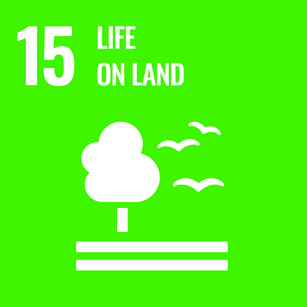
The Nilgiri Biosphere Reserve in Southern India is experiencing severe consequences of climate change. This region is rich in traditional ecological knowledge, with over 20 indigenous communities and a diverse array of biodiversity. The reserve is home to more than 3,200 species of flowering plants, 100 mammal species, 350 bird species, and numerous other fauna, many of which are endemic to the area. However, this delicate socio-ecological landscape is now under threat due to the impacts of climate change.
Despite these challenges, the valuable local cultural knowledge of adaptation and resilience, gained through generations of understanding nature-based livelihoods on agrarian and forest landscapes, needs to be adequately incorporated and utilised in climate change research and action. To address the urgent need for climate action, it is crucial to integrate past and present knowledge for the future. The ‘climate historians’ model operates on similar principles, by documenting local climate change-related stories, perceptions, and field evidence, providing important place-based context to address present concerns. Climate historians, often members of indigenous and local communities, contribute their knowledge to enhance our understanding of changing climate patterns, their impacts, and the resilience of both people and nature.
Further, given the lack of sufficient climate monitoring infrastructure in the region, integrating historical data with present datasets becomes vital in shaping climate change action for the future. Keystone Foundation aims to bridge this knowledge gap by establishing Climate Discovery Centres as essential hubs in the region, facilitating the exchange of information and fostering collaborative efforts in climate research and adaptation. These centres will also serve as valuable landing spaces to ensure that local communities’ history, knowledge, and experiences are effectively incorporated into climate change initiatives.
Context
The Nilgiri Biosphere Reserve, spread across Tamil Nadu, Kerala, and Karnataka, is a region with high biological and cultural diversity. It is home to over 20 indigenous communities and thousands of species of flora and fauna, many of which are endemic to the region. However, the Reserve’s socio-ecological landscape faces severe threats from climate change. Local cultural knowledge on adaptation and resilience is a crucial tool to help address these threats; unfortunately, climate change research has not adequately represented this knowledge, and the region lacks adequate climate monitoring infrastructure.
Climatic and anthropogenic factors, such as erratic rainfall trends, extreme events, gradual temperature rise, irregular construction activities by humans, and a decrease in natural forest cover, have disrupted the long-term patterns of the biosphere. These disruptions have resulted in an overall reduction in annual rainfall; while extreme rainfall events have led to soil erosion, reduced land fertility, and lower vegetation yield. In 2019, the Avalanche and Emerald Valley regions of the Reserve received an unprecedented 900-millimeter (mm) rainfall within 24 hours. It broke the record for the highest rainfall in Tamil Nadu, by nearly twice the amount, and for over 4 days, the region experienced close to 2,500 mm of rainfall. Consequently, the increased frequency of extreme weather events, including floods, droughts, and landslides, is affecting both the people and nature in the region. Moreover, the gradual temperature increase has negatively impacted endemic species such as Anaphalis neelgerryana, Helichrysum wightii, and Andropogon polyptychus. To add to this, activities such as clearing grasslands for tea plantations, and introduction of exotic plant species for fuelwood, paper production, and other purposes has already been a major contributor behind reduction in the nature area of the biosphere reserve and threatened the natural habitats of local fauna, including the Nilgiri Tahr.
The region is also home to the endangered shola forest-grassland mosaic ecosystem, which has been severely impacted by landscape changes since the nineteenth century, affecting indigenous people’s traditional livelihoods and life choices. The shola-grassland mosaic ecosystem, growing along the folds and valleys of the Nilgiri mountains and harboring several endemic and rare species of flora and fauna, is at risk of habitat loss and destruction. The montane grasslands cover larger portions of the mountains, mainly where shola forests do not exist. Together, the shola-grassland mosaic ecosystem is highly efficient in absorbing and slowly releasing high rainfall throughout the year, contributing to the formation of perennial streams. However, even this resilient ecology cannot withstand the tremendously high amounts of rainfall the region is experiencing due to worsening climate change, leading to ecosystem collapse.
While conservationists and activists are fighting to protect forests and wilderness areas from deforestation, mining, and diversion to other projects; the indigenous communities in the region have managed to sustain some of their traditional socio-ecological landscape management practices. Their role in supporting the long-term sustainability of the shola-grassland mosaic is crucial for conserving this endangered and highly biodiverse ecosystem while preserving their unique indigenous culture. Unfortunately, this local knowledge, as well as related practices that could help adapt and cope with climate change and its impacts are not being adequately recognised in climate change research; moreover, there is a lack of proper infrastructure for monitoring climate conditions in the area.
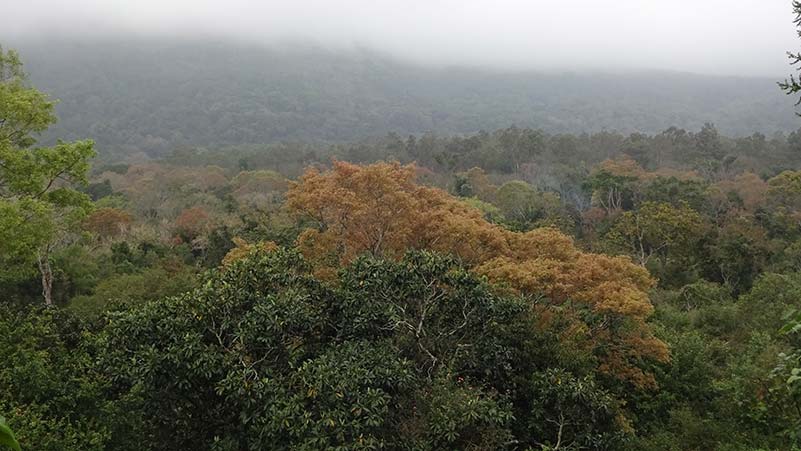
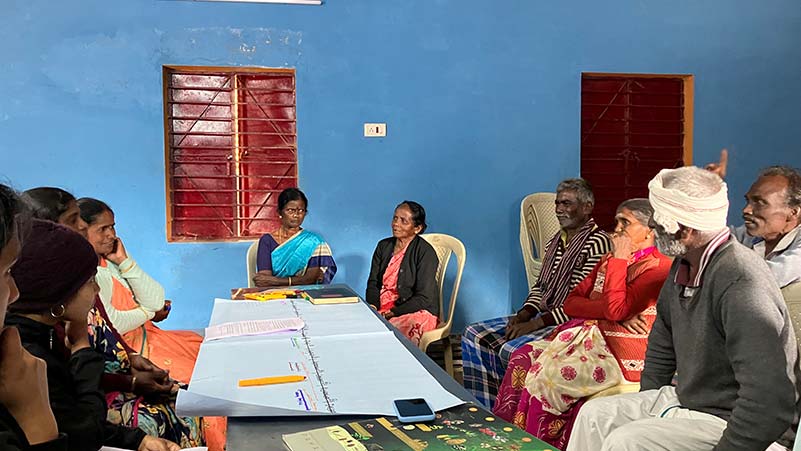
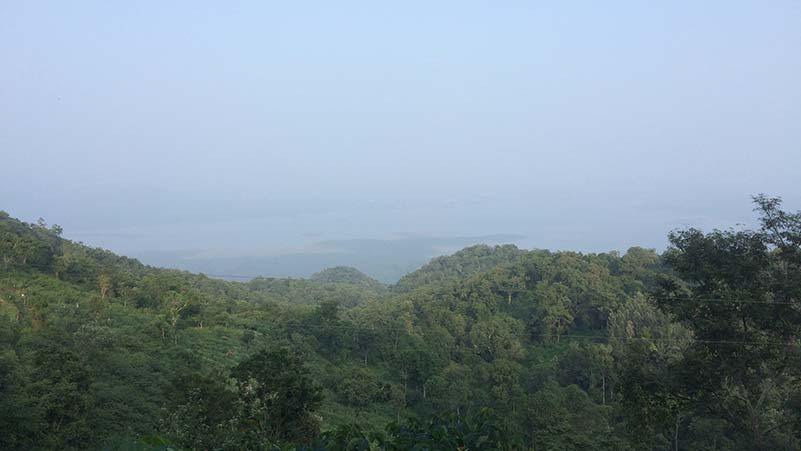
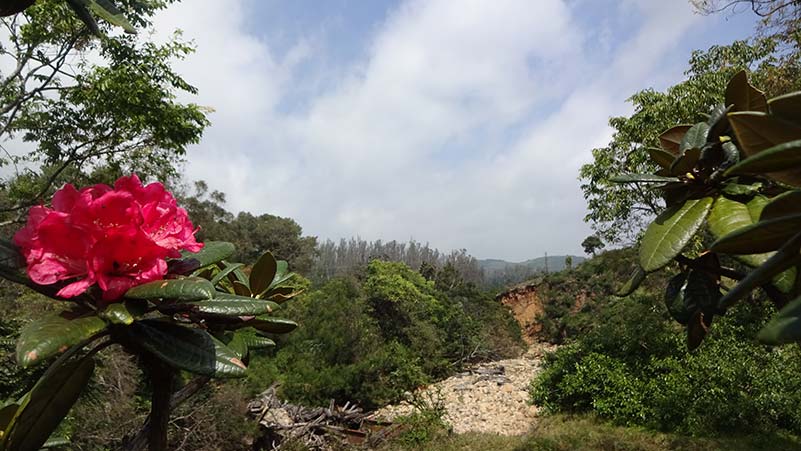


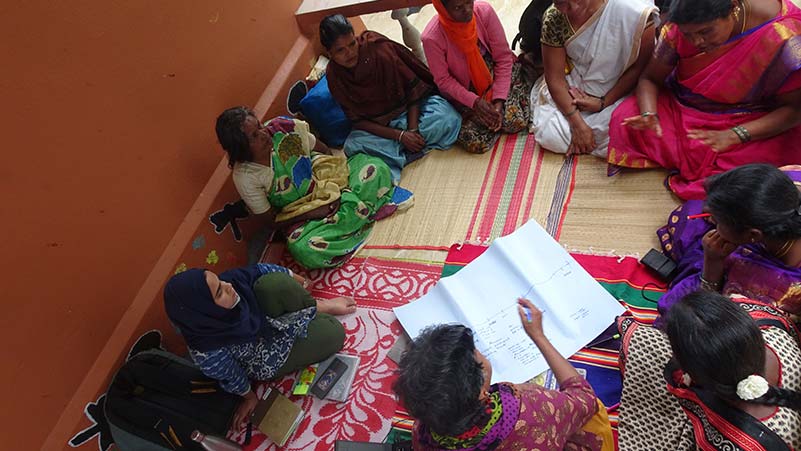
Problem statement
Climate change and extreme weather events have profoundly impacted the livelihoods of communities in and around the Nilgiri Biosphere Reserve. One significant effect is the shift from agriculture to daily wage labour as a means of income. Research conducted by Keystone Foundation in Kotagiri to understand the impact of climate change demonstrated this shift, highlighting unfavorable climatic conditions for farming and tea production as the primary reason. This transition has far-reaching effects on the overall well-being of the communities, including their health and education, as daily wage employment is uncertain and leads to insecurities. Similar pilots were carried out in Sathyamangalam, Sigur, and Mudumalai. In Mudumalai, the pilot focused on understanding the significant effects of weather and climate patterns, particularly in relation to water flow in rivers caused by storm bursts, in higher catchment areas. The same engagement also gathered that crops and their vulnerability to insect infestations under summer heat require further investigation. In Sathyamangalam, cultural beliefs regarding the erosion of traditional practices as the cause of forest and farm damage by wildlife were emphasised. Non-timber forest product (NTFP) collection emerged as a significant source of livelihood support in the region, and the presence of seemar or Phoenix grass as a reliable backup plan for crop failures suggested potential for resilience building and exploring additional livelihood solutions.
Without addressing these issues, communities will remain vulnerable to climate change, and the risks of further impacts will continue to rise. Therefore, it is crucial to develop appropriate climate action plans urgently. Unfortunately, the absence of a climate baseline and the lack of context-specific historical knowledge embedded in community-based strategies have significantly hindered the planning and implementation of effective and need-based climate action in the region. This absence prevents the utilisation of local and traditional climate knowledge, which is crucial for addressing climate change. Many communities need help accessing this knowledge, resulting in generic climate solutions not tailored to their specific needs and locations, often proving ineffective. As the pilots have shown, the influence of climate on livelihood choices and outcomes varies across different geographies, with factors such as access restrictions, wildlife interactions, and existing socio-economic contexts playing significant roles. Therefore, solutions must be contextual.
Goals and objectives
The project aims to integrate past knowledge with the present, for a holistic understanding of changing climate patterns, impacts, and resilience of people and nature in the Nilgiri Biosphere Reserve, through community-based climate historians. The specific objectives of the project are as follows:
- Utilise the perception of local communities and their histories of adaptation and resilience to inform current climate data, creating a comprehensive database of climate indicators derived from traditional ecological knowledge.
- Enhance climate change research and action in the region by representing and including the local lens for adaptation, mitigation, and resilience.
- Establish Climate Discovery Centres as landing spaces for integrating past and present climate data and discourse. These centres will provide valuable insights into climate change and its regional impacts.
- Develop climate change action plans for the Nilgiri Biosphere Reserve based on integrating the local community’s traditional ecological knowledge, perceptions, and practices with the current climate patterns and their impacts on people and nature.
About the organisation
Keystone Foundation is a not-for-profit trust registered in 1993 under the Indian Trust Act of 1882, based out of Kotagiri, but with field centres across Nilgiri Biosphere Reserve. They started working in the region, with the aim to achieve livelihood and food security, land and community rights, as well as community health and development for indigenous communities, while also ensuring conservation of biodiversity. In the later years, they shifted their focus to the socio-ecological growth of all life in the Nilgiri Biosphere Reserve. Their scope of work has now transcended boundaries to include tribal populations in other parts of the country, as well as collaborations with allied organizations that share their ethos and vision. Their work links issues of natural resources and rural development with a cross-cutting lens of climate change. In recent years some of the projects addressed the challenges of climate change on conservation, livelihoods, and enterprise development, through appropriate knowledge and action, technologies, socio-economic innovations, and institutions.






